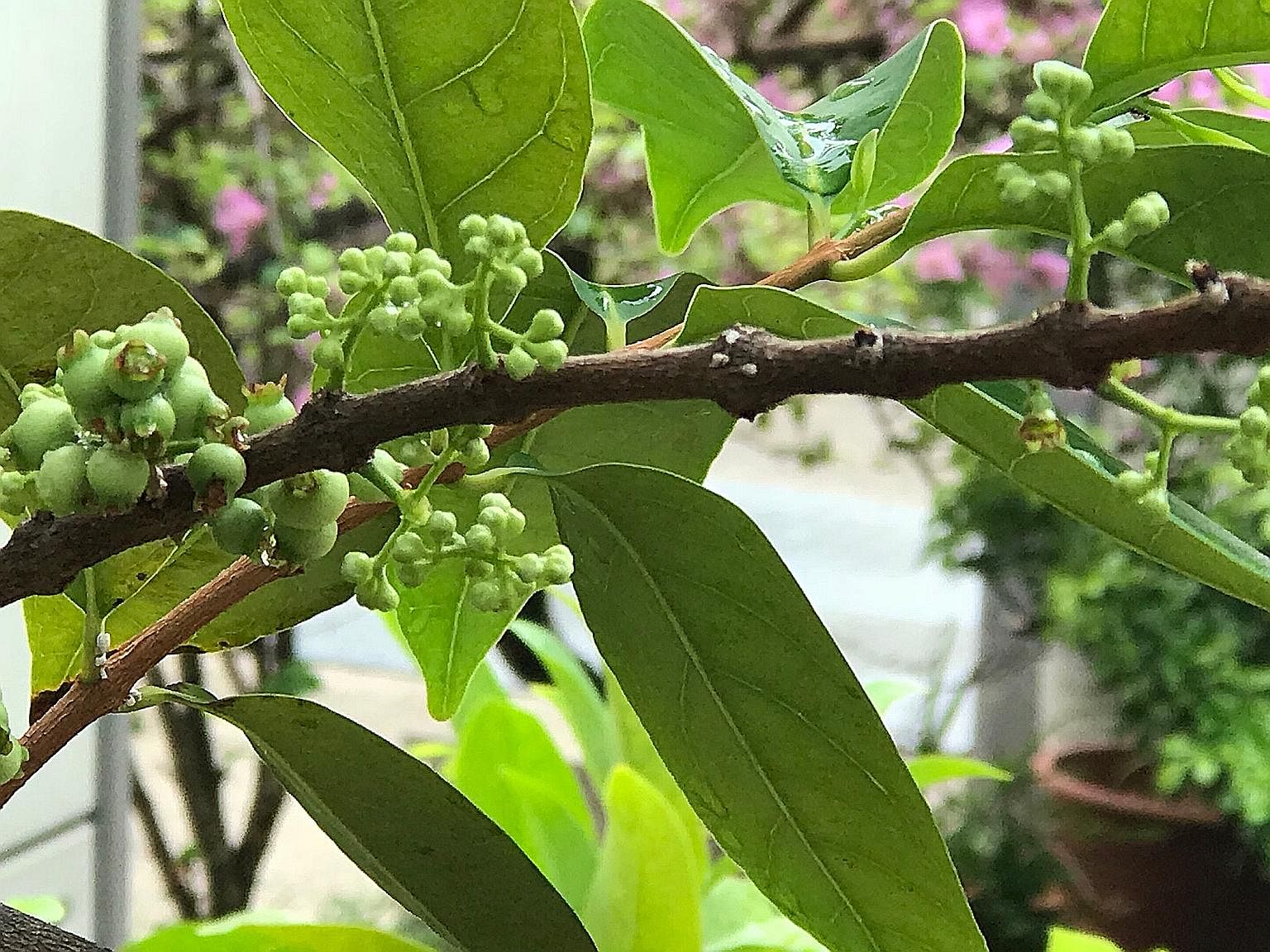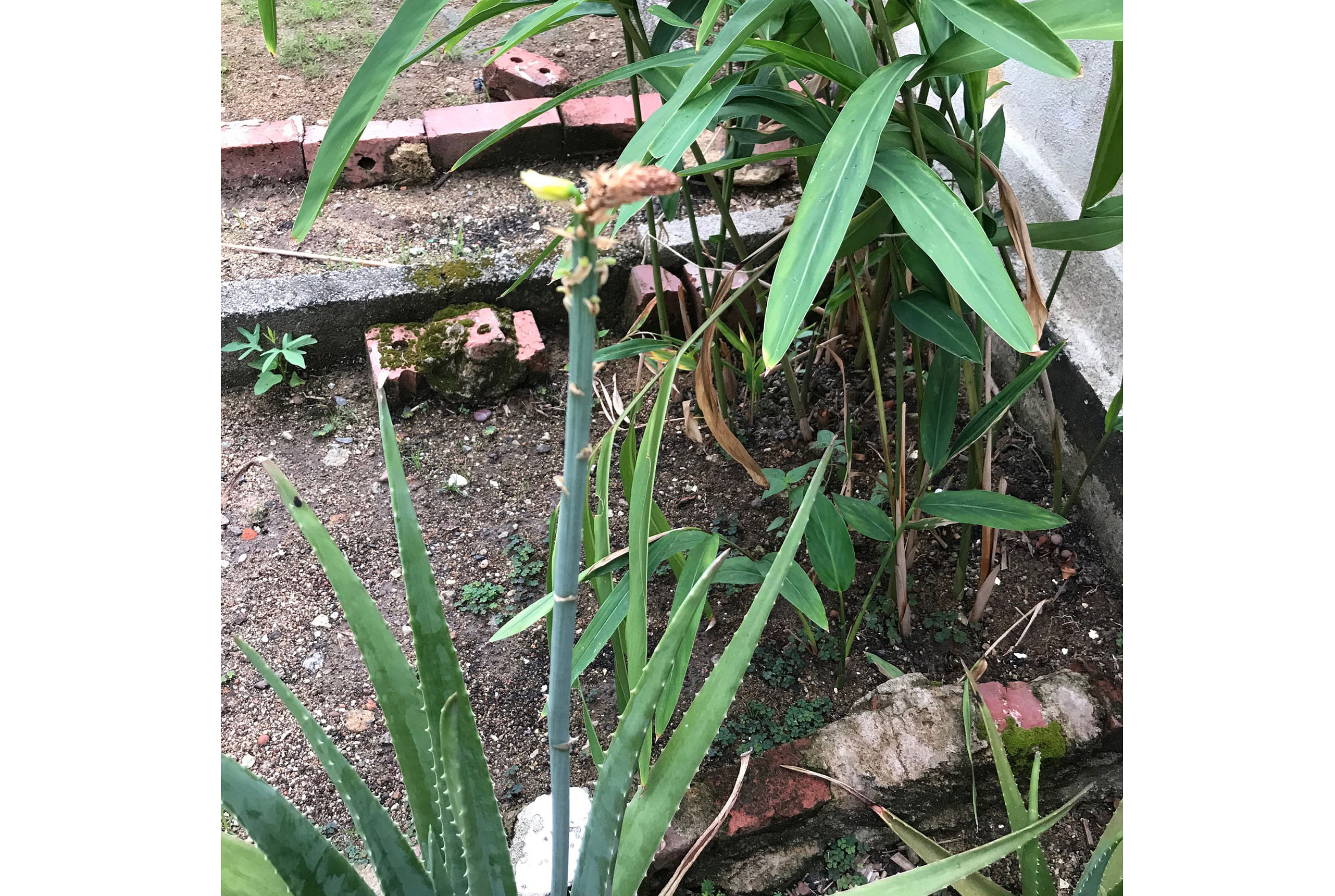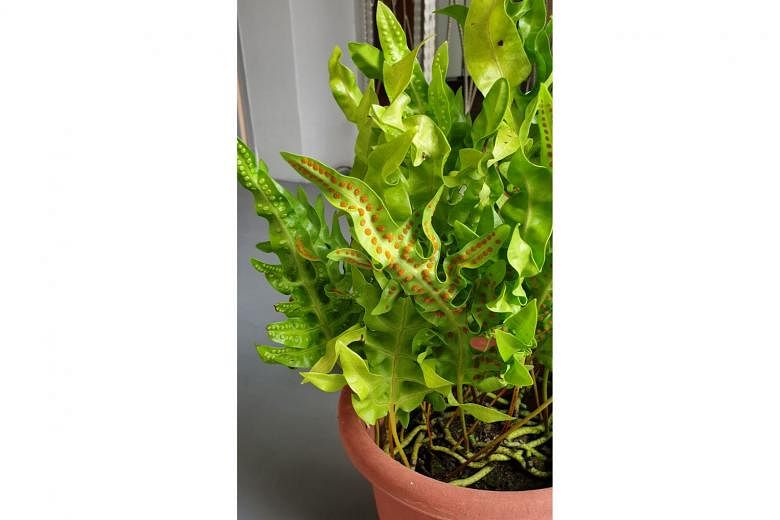Orange dots are fern's spore sacs
What are those orange dots on the leaves (above)? There are only three branches totally covered with the dots and the rest are not affected. Are these spots harmful?
Fiona Lau
The plant appears to be a fern called Polypodium and this variety is "Green Wave", commonly sold in nurseries as a landscaping or potted plant.
The orange spots on the undersides of the frond are its spore sacs, which, in layman terms, can be referred to as the plant's reproductive structures.
They are unique to the fern group of plants and quite unlike the flowers and fruit seen in flowering plants. There is no cause for concern.
Fig plant has rust disease

My fig tree was growing well until a month ago, when the leaves started to have brown spots (above). The fruit had also stopped growing. How can I make the tree healthy again?
Grace Liew
Your fig plant (Ficus carica) appears to be infected with rust disease, which is fungal in nature. It is a common issue in plants grown in tropical, humid Singapore.
You should grow this plant under a clear shelter that protects it from rain and yet allow sunlight to get through.
Exposing the plant to tropical rains can worsen the fungal issue.
Remove all infected leaves to reduce the spread of the disease.
You may want to also try a copper-based fungicide to manage the disease.
Periwinkle may be lacking nutrients

When I bought this hanging periwinkle plant (above) from the nursery, the flowers were around 3cm in diameter. However, the new flowers are only about 1cm wide. What could have caused the size of the flowers to shrink?
Fong Cheng Han
It appears that your periwinkle plant may be lacking in nutrients. It can be seen in the yellowing of some of its leaves. If you have a soil pH meter or test kit, check the pH level (acidity/alkalinity) of the growing media.
Plants growing in the same media, especially in pots, for a long time may experience pH shifts that can affect their nutrient uptake. The addition of fertiliser will usually not help if the soil pH level is not in the optimal range as nutrients will be locked up.
The type of growing media used to produce and grow this plant may be a factor too.
In production nurseries, the media used may be the soil-less type based on peat moss or coconut peat and these are poor in nutrients and do not hold nutrients well. There is a constant need to apply fertilisers to keep up with the plant's nutritional needs.
Indonesian Bay Leaf often used in cooking

I was told the leaves of this plant can be used to cook meat. Is this the bay leaf plant? My friend's young son also eats the ripened fruit from this tree. However, I am unable to get the aroma from the leaves.
Chong Phit Lian
The plant is likely the Syzygium polyanthum. It is a tree that has leaves with culinary uses and are commonly called Indonesian Bay Leafor Daun Salam. In South-east Asia - in particular, Indonesia - the young leaves are often used as a spice in cooking. Fresh or dried versions are used.
The plant is different from the Bay Laurel (botanical name - Laurus nobilis) where its leaves are more commonly used in Western cuisine.
The plant can grow into a large tree and was once popular for planting along Singapore's streets, parks and gardens. Its fruit is popular with birds, which disperse the seeds through their droppings.
Bad handling or sucking pests may have affected growth of flower stalk

Why do the flowers on my aloe vera wilt and dry out (above) before they bloom? This is the second time it has happened.
Joanna Er
The growing tip of your aloe vera inflorescence could have been damaged and this could be due to several reasons.
First, check that it was not due to mechanical damage. Some possible causes could include accidental bad handling of the plant, such as someone brushing against it; or animals like birds pecking on it.
Another reason could be due to sucking pests, such as mites, that suck sap on the growing tip.
These pests can be very small and you need a good hand lens or even a microscope to see them.
Such pests can be managed via the application of neem oil, summer oil or sulphur soap solution. As the plant tissue can be tender, use only very diluted solutions to avoid damage.
• Answers by Dr Wilson Wong, an NParks-certified practising horticulturist and park manager. He is the founder of Green Culture Singapore and an adjunct assistant professor (Food Science & Technology) at the National University of Singapore.
• Have a gardening query? E-mail it with clear, high-resolution pictures of at least 1MB, if any, and your full name to stlife@sph.com.sg

